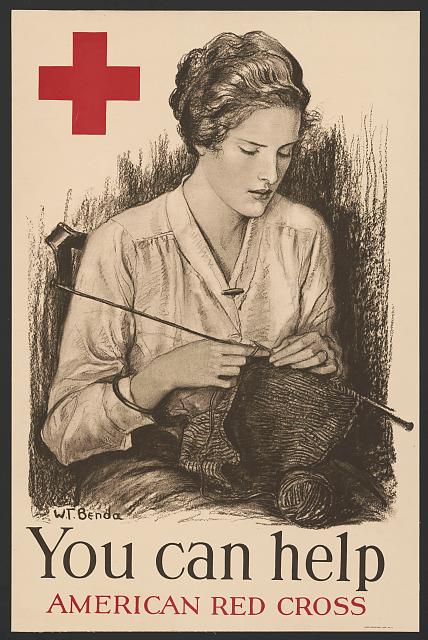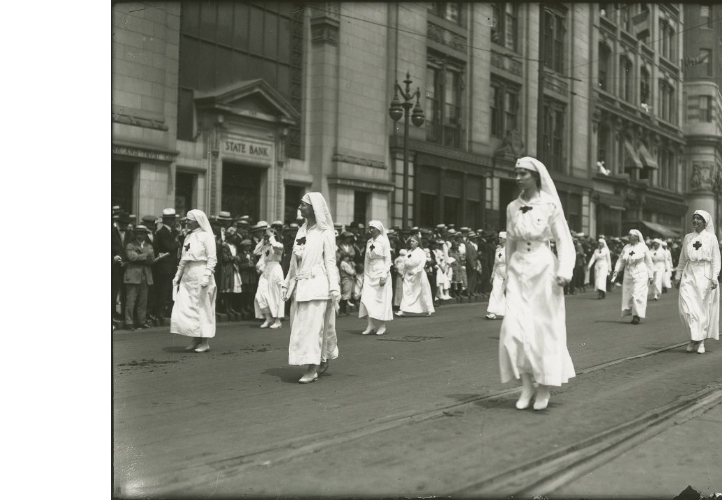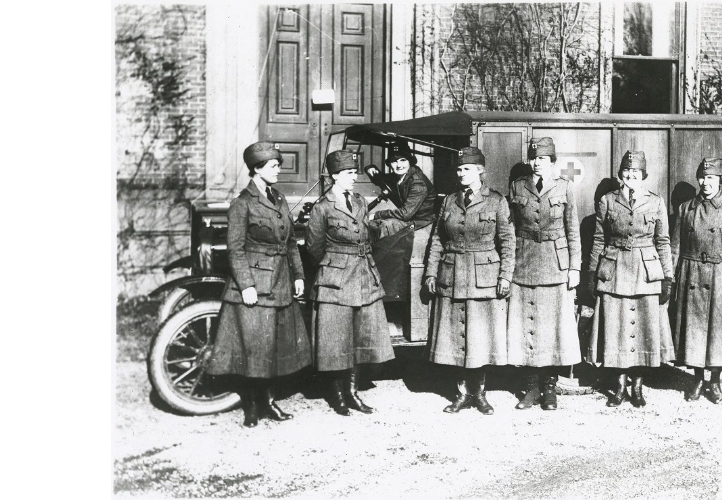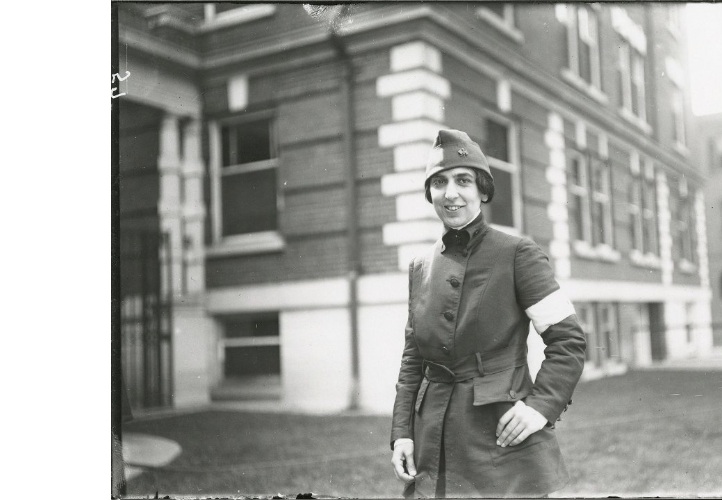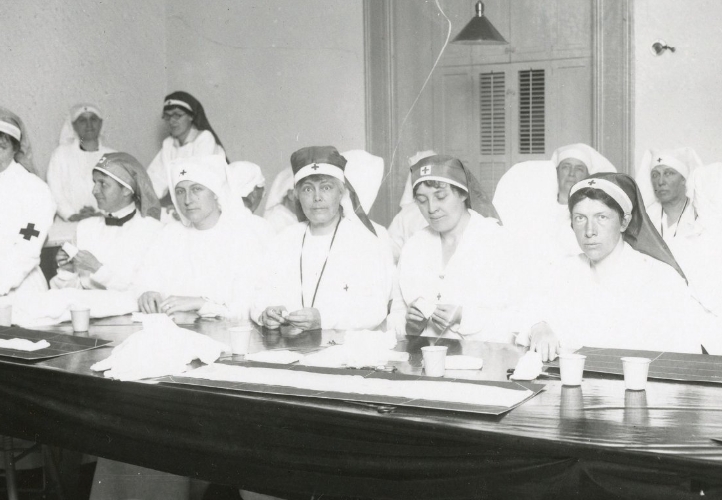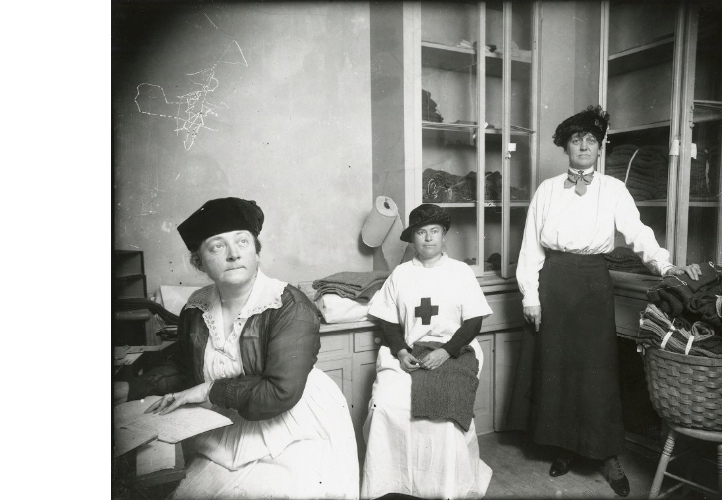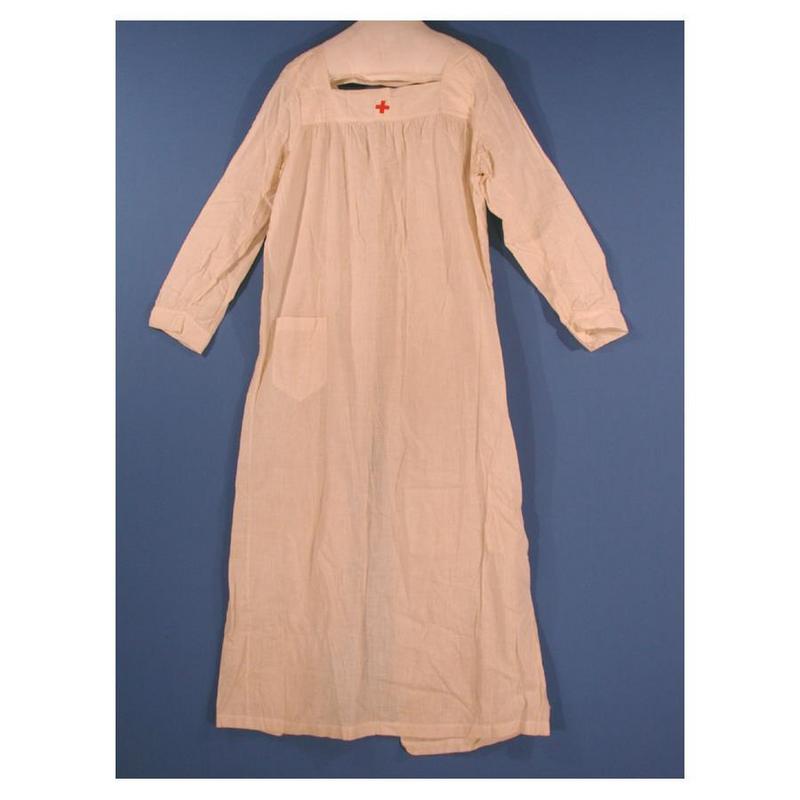Women's Uniforms in WW I
Uniforms played an important part in legitimizing the status of women as equal parties in the war relief effort. Wearing uniforms allowed women to shed the stigma of the Camp Followers from earlier wars to one of respect and hierarchy. Working class women and middle class women all joined the war efforts taking over the jobs their men had occoupoed before. In joining the workforce as telegraphers, mail carriers, train and trolley drivers women wore uniforms. As women joined the military in reserve they wore uniforms similar in style and color to the men. Although in most cases, women still wore skirts, uniforms for women volunteers were designed to appear gender neutral. The rigid militarized look of women's uniforms, inlcuding hats and lapels with insignia make them look orgnized and "uniform" as the name suggests. This made the transition of women in the workforce easier for men and society in general to accept them.
Margaret Vining and Barton C. Hacher, From Camp Followers to Lady in Uniform: Women, Social Class and Military Institutions before 1920
Red Cross uniforms changed with the entry of women into the war efforts. The style and cut of Red Cross uniforms began to change dramatically with nurses working in different occupations requiring them to travel in cars and ambulances and to do greater physical work. The lengths of women's skirts for uniforms were shortened. The shorter length allowed them to move more freely and to avoid tripping over fabric or dragging their skirts through mud and wet streets. For nurses uniforms the emphasis was on cleanliness, so white cotton was the preferred fabric to show any stains and allow for bleaching for sanitation.
For women's uniforms in the army or naval reserves their uniforms and cut and fabric resembled the men's uniforms. Women had simple pockets stitched to the exterior of their jackets and skirts similar to men's jackets and pants. The women's jackets went over the hips and used a loose belt to be worn around the waist. The loose fit and dull colors created a genderless look. Women wore a tie with thier shirts similar to the mens' uniforms. Some women even wore pants as the driver of the automobile is in this photograph of the Ambulance Corps.
Red Cross Nurse's Uniforms
The different styles and colors of Red Cross workers indicated their status. This was noted by a reporter for the Hartford Courant at the opening of the Surgical Dressing Headquarters in the Wise, Smith and Co. building on Main Street in Hartford in April of 1918. He noted the different styles and colors of caps and discovered they reflected the hierarchy of the women working and teaching skills of the Red Cross. The red veils represented instructors, while the white caps were workers and the blue caps marked the heads of different divisions. A Red Cross member with an actual "Red Cross" on their cap meant they had spent a minimum of seventy-two hours of work.
The uniform became so important culturally that even the youngest were donning uniforms as seen here in the portrait of Theodora Talcott, in Hartford.
Red Cross workers wore several layers of dress. The apron was worn over the typical uniform and was pinned to the waist at the rear. This allowed the apron to be exchanged when it was soiled without having to wash the entire dress. The Red Cross uniform was also worn as a type of smock for messy work as shown in the photgraphs below and of Red Cross worker packing clothing and blankets to be sent abroad.
